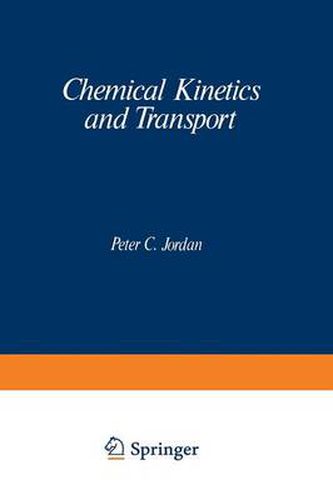Readings Newsletter
Become a Readings Member to make your shopping experience even easier.
Sign in or sign up for free!
You’re not far away from qualifying for FREE standard shipping within Australia
You’ve qualified for FREE standard shipping within Australia
The cart is loading…






This title is printed to order. This book may have been self-published. If so, we cannot guarantee the quality of the content. In the main most books will have gone through the editing process however some may not. We therefore suggest that you be aware of this before ordering this book. If in doubt check either the author or publisher’s details as we are unable to accept any returns unless they are faulty. Please contact us if you have any questions.
This book began as a program of self-education. While teaching under graduate physical chemistry, I became progressively more dissatisfied with my approach to chemical kinetics. The solution to my problem was to write a detailed set of lecture notes which covered more material, in greater depth, than could be presented in undergraduate physical chemistry. These notes are the foundation upon which this book is built. My background led me to view chemical kinetics as closely related to transport phenomena. While the relationship of these topics is well known, it is often ignored, except for brief discussions of irreversible thermody namics. In fact, the physics underlying such apparently dissimilar processes as reaction and energy transfer is not so very different. The intermolecular potential is to transport what the potential-energy surface is to reactivity. Instead of beginning the sections devoted to chemical kinetics with a discussion of various theories, I have chosen to treat phenomenology and mechanism first. In this way the essential unity of kinetic arguments, whether applied to gas-phase or solution-phase reaction, can be emphasized. Theories of rate constants and of chemical dynamics are treated last, so that their strengths and weaknesses may be more clearly highlighted. The book is designed for students in their senior year or first year of graduate school. A year of undergraduate physical chemistry is essential preparation. While further exposure to chemical thermodynamics, statistical thermodynamics, or molecular spectroscopy is an asset, it is not necessary.
$9.00 standard shipping within Australia
FREE standard shipping within Australia for orders over $100.00
Express & International shipping calculated at checkout
This title is printed to order. This book may have been self-published. If so, we cannot guarantee the quality of the content. In the main most books will have gone through the editing process however some may not. We therefore suggest that you be aware of this before ordering this book. If in doubt check either the author or publisher’s details as we are unable to accept any returns unless they are faulty. Please contact us if you have any questions.
This book began as a program of self-education. While teaching under graduate physical chemistry, I became progressively more dissatisfied with my approach to chemical kinetics. The solution to my problem was to write a detailed set of lecture notes which covered more material, in greater depth, than could be presented in undergraduate physical chemistry. These notes are the foundation upon which this book is built. My background led me to view chemical kinetics as closely related to transport phenomena. While the relationship of these topics is well known, it is often ignored, except for brief discussions of irreversible thermody namics. In fact, the physics underlying such apparently dissimilar processes as reaction and energy transfer is not so very different. The intermolecular potential is to transport what the potential-energy surface is to reactivity. Instead of beginning the sections devoted to chemical kinetics with a discussion of various theories, I have chosen to treat phenomenology and mechanism first. In this way the essential unity of kinetic arguments, whether applied to gas-phase or solution-phase reaction, can be emphasized. Theories of rate constants and of chemical dynamics are treated last, so that their strengths and weaknesses may be more clearly highlighted. The book is designed for students in their senior year or first year of graduate school. A year of undergraduate physical chemistry is essential preparation. While further exposure to chemical thermodynamics, statistical thermodynamics, or molecular spectroscopy is an asset, it is not necessary.